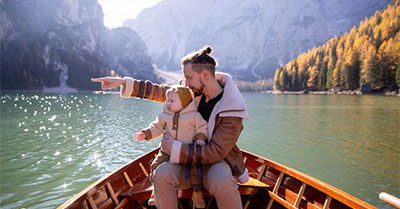5 Rhetorical Modes of Writing
Descriptive Mode
In the descriptive mode of writing, you focus on details about the topic (a person, thing, place, or idea).
Descriptions help readers “visualize” or “get a feel for" ideas through all their senses by describing smells, textures, colors, shapes, temperature, and so on.

Tatiana Syrikova | Pexels
Descriptive mode of writing
Impact on readers. Descriptive writing makes use of human beings’ ability to use all senses to understand the world around them. Descriptions can make it easier for readers to understand abstract, complex topics.
Tone. In the descriptive mode of writing, you can choose the tone that is most appropriate to the message. A description can be very precise, humorous, didactical, and so on.
Type of Materials. Descriptive writing is often found in product descriptions; first-person accounts such as journal and blog writing; memoirs; descriptions of nature, a product, or travel destination; and so on; recipes or tutorials.
When asked to provide the details in an exam question, students should use a descriptive mode of writing writing.
Examples of descriptive mode of writing
Example 1
The Empire State Building is a skyscraper located in Midtown Manhattan. Standing at 1,454 feet, the building is constructed of steel, concrete, and limestone. It features a distinctive art deco design that was popular during the 1930s. The exterior of the building is a light gray color, with dark-colored windows that cover the majority of the facade. The building is has modern amenities such as high-speed elevators and a high-tech security system.
Example 2
Below is a paragraph in which National Geographic contributor Paul Salopek uses descriptive writing to tell the reader about his experience in the Himalayas. Note how Salopek describes the scenery, the temperature of the air, and the sensation of motion through the scenery. The passage includes an element of narrative as the author tells the story of that experience, but the main mode of writing is descriptive.
Earlier this year, a teacher friend named Yang Wendou and I hiked across the Hengduan Mountains from south to north. We climbed through forests of fir, spruce, and Yunnan pine. We skidded down snowy passes within sight of Tibet. We breathed razor-cold air at 15,000 feet. We yo-yoed among ice peaks for 220 miles. We saw many wonders. Ours was perhaps the first foot traverse of the vast mountain range, an eastern extension of the Himalaya, undertaken in generations.
Source:
Salopek, Paul. “Ancient Himalayan towers keep their secrets on a walk through southwest China.” National Geographic, 2022, www.nationalgeographic.com/history/article/ancient-towers-keep-secrets-on-a-walk-through-southwest-china.
Writing tip
Have you heard the expression “a picture is worth a thousand words” before? It means that an image can convey a complex message better than a long explanation.
Are you having difficulties explaining or defining a complex concept or topic? Consider adding descriptive text to your writing if appropriate.
Up Next: Persuasive Mode
Continue the course to learn to learn about the persuasive mode of writing.